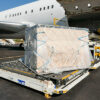Alaska is a land of natural beauty and abundance, and its economy reflects that. The state's top industries are all based on natural resources, including oil and gas, fishing, tourism, and mining. According to the U.S. Bureau of Economic Analysis (BEA), state GDP is the sum of value added from all industries in the state. In 2022, Alaska's GDP was $63.62 billion. In this blog, we'll look at the top industries that shape Alaska's current economy as defined by how much they contributed to the GDP.
-
Oil and Gas:
Alaska's oil and gas industry plays a pivotal role in the state's economy and is a significant source of jobs. In 2022, the oil and gas industry accounted for 35.7% of Alaska's GDP. The industry is centered around the North Slope of Alaska, where the Prudhoe Bay oil field is located. Prudhoe Bay is the largest oil field in North America, and it produces about 15% of the oil produced in the United States, which makes Alaska the 4th largest oil-producing state. The Trans-Alaska Pipeline System (TAPS) is a vital part of the infrastructure that facilitates oil transportation from the North Slope to Valdez, ensuring a steady flow of resources.
-
Fishing and Seafood:
Alaska's seafood industry is a powerhouse thanks to its vast coastline and abundant marine resources. The fishing industry is the second-largest in Alaska, and in 2022 made up 10% of Alaska's GDP. Alaska produces about 50% of the salmon caught in the United States and is also renowned for its wild-caught crab, halibut, and other fish varieties, including pollock. Recently, the fishing and seafood processing industry has had challenges involving canceled seasons and policy disagreements. Despite these uncertainties, the Alaska fishing industry is still a significant economic driver for the state and provides employment to numerous Alaskans.
-
Tourism:
Alaska's awe-inspiring landscapes, including glaciers, national parks, and wildlife, attract millions of tourists annually. Tourism plays a vital role in Alaska's economy and is the state's third-largest industry contributing 8% of Alaska's GDP in 2022. Offering various recreational activities such as wildlife viewing, fishing, and adventure tourism, visitors, many from port visits from cruise ships, contribute to the local economy and support jobs in hospitality, transportation, and outdoor recreation.
-
Mining:
Alaska is rich in natural resources, including gold, zinc, copper, and coal. The mining industry is the fourth largest in the state. It plays a crucial role in extracting these valuable minerals, creating jobs, and contributing to the state's revenue. Large-scale mining operations are scattered across Alaska, making it an essential industry for economic growth. In 2022, it accounted for 5% of Alaska's GDP.
-
Healthcare:
The healthcare sector is crucial in providing quality medical services to Alaska's residents. From hospitals to clinics, healthcare facilities are essential for meeting the population's diverse needs, especially in remote areas. This industry encompasses many professionals, including doctors, nurses, technicians, and support staff. The healthcare industry is a major employer in Alaska and is expected to grow in the coming years. In 2022, the healthcare industry accounted for 3% of Alaska's GDP.
-
Construction:
Alaska's infrastructure development and construction projects contribute significantly to the state's economy. As the population grows, there is a demand for construction services, including residential and commercial buildings and transportation projects, such as roads and bridges. This industry provides employment opportunities for skilled workers and boosts economic activity. In 2022, the construction industry accounted for 4% of Alaska's GDP.
-
Education:
Alaska's education sector focuses on providing quality learning opportunities to its residents. From K-12 schools to universities and vocational training centers, the state emphasizes education as a pathway to individual and economic growth. The education industry is a significant employer in Alaska and supports a diverse range of professionals, including teachers, administrators, and support staff. In 2022, the education industry accounted for 2% of Alaska's GDP.
Up and coming industries:
Technology and Innovation:
Alaska's technology sector is evolving and has excellent growth potential. Startups and tech companies are emerging, focusing on software development, cybersecurity, data analytics, and telecommunication. This industry brings innovation, entrepreneurship, and high-paying jobs, contributing to the state's economic diversification.
Renewable Energy:
As the world increasingly focuses on sustainability, Alaska has been investing in renewable energy sources. The state boasts significant potential for hydropower, wind, solar, and geothermal energy. The development of renewable energy projects reduces Alaska's reliance on fossil fuels and stimulates economic growth and job creation.
Aerospace:
Alaska's strategic location makes it an ideal launch site for satellites and space exploration. The aerospace industry has been gaining momentum in recent years, with several private companies and government agencies establishing a presence in the state. This industry brings opportunities for high-tech jobs, research, and technological advancements.
Alaska's economy thrives on various industries that utilize the state's abundant natural resources and capitalize on its unique geographical advantages, from the traditional sectors of oil and gas and seafood to emerging fields like renewable energy and technology.
If you are looking to ship cargo to Alaska, Alaska Air Forwarding’s extensive network can transport items anywhere in the state all year round. Contact us to inquire about shipping freight or get a quote.






